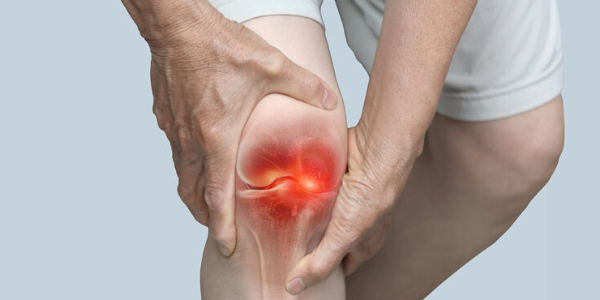Scientists have discovered that rheumatoid arthritis (RA) begins long before the first symptoms of pain or stiffness appear. The disease does not start when joint pain becomes noticeable, but develops unnoticed over many years. RA is a chronic autoimmune disease that causes inflammation and damage to the joints. According to new research, people at higher risk of RA undergo significant changes in their immune system long before symptoms appear. In this early, silent phase, their bodies are already engaged in an invisible battle against the autoimmune disease.
What is Rheumatoid Arthritis?
Rheumatoid arthritis is a chronic inflammatory autoimmune disease in which the immune system mistakenly attacks the body’s own tissue—especially the inner lining of the joints. This causes persistent inflammation, which can lead to swelling, pain, and increasing destruction of cartilage and bone over time. The disease often begins gradually and initially affects small joints, such as those in the fingers and hands, often symmetrically on both sides of the body. Typical symptoms include morning joint stiffness lasting longer than 30 minutes, fatigue, exhaustion, and occasionally general symptoms such as a slight fever.
Rheumatoid arthritis usually progresses in episodes: periods of increased discomfort alternate with phases of fewer symptoms. If left untreated, the progressive inflammation can lead to misalignment of the joints and significant restrictions in movement. The causes are not fully understood, but genetic factors, hormonal influences, and environmental factors such as smoking are thought to play a role. Treatment aims to slow down the inflammation, relieve pain, and prevent joint damage. This often involves the use of so-called basic therapeutics (DMARDs), anti-inflammatory drugs, physical therapy, and, in some cases, modern biologics. With early and consistent therapy, the course of the disease can now be significantly slowed down in many patients and their quality of life improved.
A Multidisciplinary Study Maps the Hidden Early Phase of RA
Researchers from the Allen Institute, CU Anschutz, the University of California San Diego, and the Benaroya Research Institute have worked together to uncover these early immune changes. Their findings, published in Science Translational Medicine, offer the most detailed insight to date into the development of RA. By mapping immune activity in at-risk patients, the team was able to show that the disease process begins long before joint problems appear. These findings could help enable earlier interventions and possibly prevent the onset of the disease.
“Overall, we hope this study raises awareness that rheumatoid arthritis begins much earlier than previously thought and enables researchers to make data-driven decisions about strategies to interrupt disease progression,” said Dr. Mark Gillespie, assistant researcher at the Allen Institute and co-senior author along with Dr. Kevin Deane (CU Anschutz), M.D./ Ph.D.; Adam Savage (Allen Institute), Ph.D.; Troy Torgerson (Allen Institute), M.D./Ph.D.; and Gary S. Firestein (UC San Diego), M.D. The study followed individuals with ACPA antibodies over a period of seven years. These antibodies are established biomarkers for individuals at risk for RA. During the study, the team discovered previously unknown factors that contribute to disease progression, including widespread inflammation, immune system malfunctions, and changes in the functioning of certain immune cells.
“We expect that the results of this study will support further research to find ways to better predict who will develop RA, identify potential biological targets for RA prevention, and find ways to improve treatment for people with existing RA,” said Kevin Deane, M.D./Ph.D.
Key Findings
- Widespread inflammation: The researchers observed that people at risk for RA already showed signs of systemic inflammation throughout the body. This inflammation was not limited to the joints. Instead, it resembled the body-wide pattern of inflammation often seen in people with active RA.
- Immune cell dysfunction: Several types of immune cells exhibited unusual behavior.
- B Cells that normally produce protective antibodies were in an elevated proinflammatory state.
- T helper cells, particularly those resembling Tfh17 cells, had proliferated far beyond normal levels. These cells help coordinate immune responses, including the formation of autoantibodies (antibodies that attack the body’s own tissues). Their proliferation explains why the immune system begins to attack healthy tissue.
- Cellular reprogramming: One of the most striking discoveries was that even “naive” T cells, which had not yet come into contact with pathogens, showed epigenetic changes. Although their DNA sequence remained intact, the regulation of their genes had shifted. This altered gene activity suggests that these cells were reprogrammed before they came into contact with threats.
- Joint-like inflammation detected in the blood: The team also found that monocytes (a type of white blood cell) circulating in the bloodstream produced large amounts of inflammatory molecules. Remarkably, these cells closely resembled the macrophages typically found in the inflamed joints of RA patients, suggesting that the immune system had already created the conditions for joint inflammation.
Towards Early Detection and Preventive Treatment
The findings reveal new early warning indicators (biomarkers and immune signatures) that could help doctors determine which at-risk patients are most likely to develop RA. Detecting the disease at this hidden stage could enable closer monitoring of patients and earlier treatment. If this process is detected in time, RA may be prevented before joint damage occurs, potentially sparing patients years of pain and disability. The research supports a shift from responding to joint damage after it occurs to preventing RA at the earliest stage.
The Role of the Gut
According to research, changes in the gut microbiome before the onset of rheumatoid arthritis could offer an opportunity for preventive treatment. A long-term study by researchers in Leeds has found that elevated levels of inflammatory bacteria are present in the gut about ten months before the onset of clinical rheumatoid arthritis. Rheumatoid arthritis is a chronic disease that affects more than half a million people in the UK. It causes swelling, pain, and stiffness in the joints because the immune system mistakenly attacks the body’s healthy cells.
Previous research has linked rheumatoid arthritis to the gut microbiome, the ecosystem of microbes in your gut. However, this new study, published today in the Annals of the Rheumatic Diseases, points to a possible target for intervention.
Lead researcher Dr. Christopher Rooney, academic lecturer at NIHR at the University of Leeds and Leeds Teaching Hospitals NHS Trust, said: “Patients at risk of rheumatoid arthritis already suffer from symptoms such as fatigue and joint pain and may know someone in their family who has the disease. As there is no known cure, patients at risk often feel a sense of hopelessness or even avoid getting tested.
Signals From the Gut Could Revolutionize the Treatment of Rheumatoid Arthritis
The long-term study, funded by Versus Arthritis, was conducted on 19 patients at risk of rheumatoid arthritis. Samples were taken five times over a period of 15 months. Five of these patients developed clinical arthritis, and research showed that they had intestinal instability with higher levels of bacteria, including Prevotella, which is associated with rheumatoid arthritis, about ten months before the disease progressed. The remaining 14 patients, whose disease did not progress, had largely stable levels of bacteria in their intestines. Potential treatments that researchers want to test during this ten-month period include dietary changes such as a higher-fiber diet, taking prebiotics or probiotics, and improved dental hygiene to keep harmful bacteria from periodontal disease out of the gut.
The exact link between gut inflammation and the development of rheumatoid arthritis remains unclear. In a small number of patients within the study, the changes in the gut occurred before a rheumatologist observed changes in the joints, but further research is needed to determine whether these influence each other. Although bacteria are associated with rheumatoid arthritis, the researchers want to make it clear that there is no evidence that it is contagious.
Lucy Donaldson, Director of Research and Health Information at Versus Arthritis, said: “At Versus Arthritis, we welcome the findings of this study, which could offer future doctors a crucial way to delay or even prevent the onset of rheumatoid arthritis. This success is testament to the dedication of UK researchers working to personalize treatments and prevent chronic conditions that have a significant impact on a person’s ability to work, start a family, and live independently. “
Years of Work
The research was conducted in collaboration with the National Institute for Health Research Leeds Biomedical Research Centre under the research themes ”Antibiotic Resistance and Infections“ and ”Musculoskeletal Diseases.” Leeds Teaching Hospitals NHS Trust, Versus Arthritis, and Leeds Hospitals Charity were also partners in the project. Patients at Chapel Allerton Hospital helped design the study to make it easier for participants to collect stool samples.
The study was initially based on data from 124 individuals with high levels of CCP+, an antibody that attacks healthy cells in the blood and indicates a risk of developing rheumatoid arthritis. The researchers compared their samples with those from 22 healthy individuals and seven individuals who had been newly diagnosed with rheumatoid arthritis. The results from this larger group showed that the gut microbiome in the risk group was less diverse compared to the healthy control group. The long-term study, in which samples were taken from 19 patients over a period of 15 months, showed the changes in bacteria ten months before the progression to rheumatoid arthritis.








